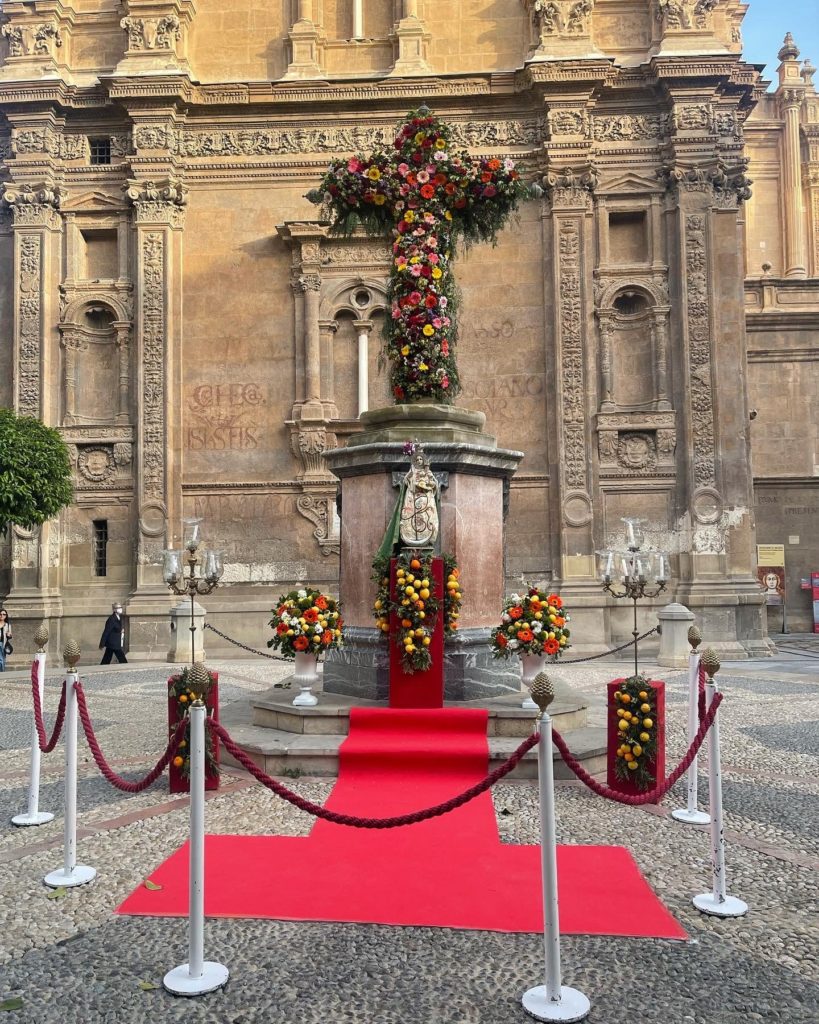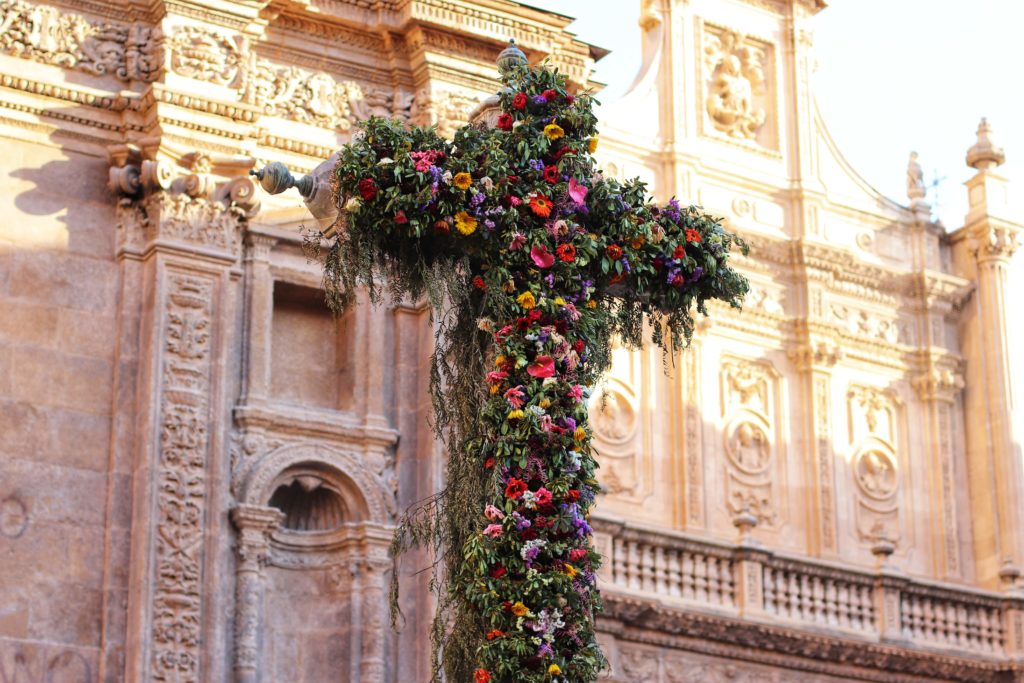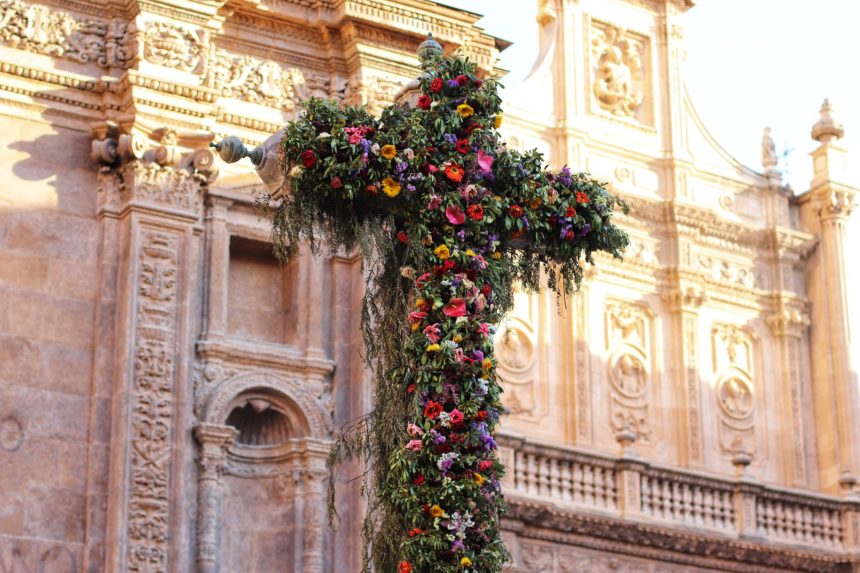When May arrives, many cities of the south of Spain are filled with the scent of fresh flowers, orange blossom and other fragrances of spring.
One of the main festivals taking place in May is called Cruces de mayo (May crosses) or just Mayos (may). During all the month crosses made with fresh or paper flower takes over streets and squares filled with hundreds of colours and fragrance the atmosphere.

This celebration, with pagan origins, became a catholic tradition on the IV century. In Murcia and Andalucia, south of Spain, at the begging of the XIX century young unmarried men used to go out on the streets to sing mayos, a song with rhythms of copla. These songs spoke about the beauty of the courted women; slowly, the meaning changed and instead of using this music to flirt, the mayos start praising the virgin or saints.
Today you can listen three types of mayos:
For a lady: Son tus ojos bellos/ luceros del alba/ que alumbra el cielo/ de mis esperanzas.( Your beautiful eyes/ are the morning stars/ that light up the sky/ of my hopes.)
For fun: Ha venido mayo/ bienvenido sea/ para las hermosas y para las feas (May has come/ welcome it/ for the beautiful and for the ugly girls)
For the virgin: Lleva en la corona/ esta imagen bella/ diamantes, rubíes/ granates y perlas (She is wearing on her crown/ this gorgeous image/ diamonds, rubies/ garnets and pearls)
A foreigner may wonder why. Why this flower, the cross, the songs and dance. The answer can be twofold; on the one hand, this tradition is typical of areas where the seasons marked the rhythms of life and work. So, the start of the spring meaning the golden age of market gardening and farm work. On the other hand an according the catholic tradition, the 3 of May was found the True cross, the cross on which Jesus was crucified, so this celebration this celebration can be seen as the remembrance of a miracle.
A little bit of ancient history. In 326 b.c, Empress Helena, the mother of Constantine, ordered to demolish the temple to Venus in Jerusalem and among the ruins she found three crosses; the Christ one and that one of the repentant thief and the other one. After the discovery of the True Cross, countless churches claim to have a fragment of it as a relic. But that is another story.
The decoration of the crosses is a long process of work both in the choice of the theme and in the kind of flower. The crosses can be found in squares, in front of a church or cathedral as well as in neighbourhood courtyards. The decoration of all is pretty similar, the main different are the measures, of course, the cross placed in front of the cathedral will be bigger than the one in a private courtyard. Once the cross is placed, the folkloric groups of the localities begin to sing and dance the mayos; in our days we can find three different kinds of song, in honour of the virgin, about the beauty of one woman or, the funnier one, about social or political events of the last year.
According to tradition, the crosses should be on display for the whole month and as the flowers dry, summer is approaching; the passing of time.

“Ya nos despedimos// pero no nos vamos//nuestros corazones//aquí dejamos.”
XXXXXXXXXXXXXXXXX